SOUTH YORKSHIRE LOCAL RESILIENCE FORUM
Overview
South Yorkshire Local Resilience Forum (LRF) is a multiagency partnership comprised of representatives from all the local organisations needed to plan and prepare for local incidents and emergencies.
We work together to identify potential local risks and produce multiagency emergency response plans to respond to risks which could lead to incidents in South Yorkshire.
There is more information available on the role of LRFs in the national document The role of LRFs: a reference document.
We publish an Annual Report which summarises our activity each year. You can download this below.
Our webpage is hosted by one of our multiagency partners – the South Yorkshire Mayoral Combined Authority.
Our partners
The main agencies who respond to local major incidents or emergencies are known as Category 1 Responders, as defined by the Civil Contingencies Act 2004 (CCA).
In South Yorkshire, these include:
- Our emergency services:South Yorkshire Police, South Yorkshire Fire & Rescue, Yorkshire Ambulance Service, and British Transport Police.
- Our four Local Authorities:Barnsley Metropolitan Borough Council, City of Doncaster Council, Rotherham Metropolitan Borough Council and Sheffield City Council.
- Our local NHS organisations: local NHS Trusts, the NHS South Yorkshire Integrated Care Board, and NHS England.
- The Environment Agency
- The UK Health Security Agency
LRFs are supported by organisations known as Category 2 Responders, who have a responsibility to cooperate with Category 1 Responders and to share relevant information with the LRF. In South Yorkshire these include:
- Transport infrastructure organisations such as National Highways and Network Rail.
- Utility infrastructure operators such as Northern Powergrid for electricity, Yorkshire Water and Severn Trent Water for water, and Cadent and Northern Gas Networks for gas
- The Met Office
- The Coal Authority
We also work with other partners such as South Yorkshire Mayoral Combined Authority (who lead on transport integration, economic regeneration, and also host the South Yorkshire LRF webpage), and partners in the military and voluntary sectors who provide a valuable contribution to LRF work in emergency preparedness.
Local Risks
The government produces a National Risk Register, which is the external version of the National Security Risk Assessment (NSRA) – the government’s assessment of the most serious risks facing the United Kingdom.
The National Risk Register notes that the UK faces a broad and diverse range of risks, including threats to life, health, society, critical infrastructure, economy, and sovereignty.
Risks may be non-malicious (such as accidents like a rail crash or natural hazards like flooding or a heatwave), or they may be malicious threats from those who seek to do harm (such as terrorism or cyber threats).
The National Risk Register is available on a national digital platform and also as a document GOV.UK.
The risks that meet the threshold for inclusion in the National Risk Register are those that would have a substantial impact on the UK’s safety, security and/or critical systems at a national level. The National Risk Register includes information about 89 risks, within 9 risk themes:
- Accidents and system failures
- Conflict and instability
- Cyber
- Geographic and diplomatic
- Human, animal, and plant health
- Natural and environmental hazards
- Societal
- State threats
- Terrorism
We use this as a basis to prepare a local South Yorkshire Community Risk Register which describes the highest risks in South Yorkshire, and also provides advice on preparing yourself and your home for local emergencies. You can download this below.
Preparing for emergencies
Emergencies such as flooding, fires and power cuts can affect us all.
There are some simple and effective steps we can all take to be more prepared.
That’s why the government has launched gov.uk/prepare, a new website to help build preparedness for emergencies and crises. It provides accessible and actionable advice on practical steps that individuals, households, and communities can take to improve their resilience to a range of risks.
Here are a few simple things you could do now to prepare for emergencies:
- Find out if you are eligible to sign up to your gas, electricity and water supplier’s Priority Service Registers, so they know that you need additional support, including when there is an interruption to your supply. Ask anyone you provide care for if they are registered.
- Set a reminder in your phone or make a note on your calendar to check your smoke alarms at least once a month. You can involve children in the monthly test too.
- Write down important phone numbers on paper such as the number to report a power cut (105) and the numbers of anyone you might want to contact in an emergency. You can use a national downloadable and printable household emergency plan to record this information in one document.
- Talk to your children about emergencies – teach them how and when to call 999 and what they should do if there’s an emergency, such as a fire at home.
- Check your long term flood risk and sign up for flood and weather warnings.
For heatwaves, both the NHS and the UK Health Security Agency have useful advice, plus additional guidance on the public health impact of droughts.
There is NHS advice available on seasonal health, and UK Health Security Agency have advice in their Adverse Weather & Health Plan and on cold weather.
Contact us
If you wish to contact South Yorkshire LRF, you can do so through the South Yorkshire LRF Secretariat team. Please email us here.
For any media enquiries regarding South Yorkshire LRF, please email the media team at South Yorkshire Police.
Downloads
South Yorkshire Community Risk Register



